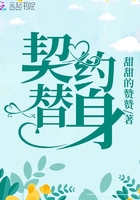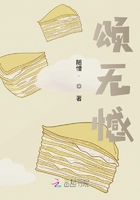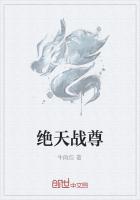然而,再往前不远,我来到威利亚区,看到一个非常有名的客栈,名字叫戴普特伏特。我在这家客栈一直待到了下午四点钟。对于威利的记忆还很清晰,小的时候我就觉得它是个乐园。我还记得有一个很漂亮的花园,那是一位富有的农场主、磨坊主的财产。我走上前去看它,唉!尽管水中与草坪上的塑像仍在,但是似乎每一件事物都是一幅被荒废的?面。最近,威利牧区归为达姆匹尔管辖(法官的一个弟弟,住在汉普郡的缅恩·斯托克。我相信他拥有掌管当地职位和收入的权力)。我相信,尽管威利区为这个家伙带来了无数不义之财,但他从来也没到过那里。我有理由认为,这个管区每年的什一税至少是六七百英镑。在我们的制度体系中,有一些家庭,他们没有特别的德行,却毫无缘由地以某种形式、某种名义,或其他什么借口靠公共费用生存。这是我们体制的一部分。如果你去查阅那些领取养老金、挂名领干薪者、牧师等类似者的名单,你就会发现一直都是相同的名字在重复出现。他们就像是公众身上的寄生虫,就像某些人皮肤上生的蛆。达姆匹尔家族似乎就是这样的寄生虫。以上帝的名义,到底是什么?因使这样的一个人成为主教或大法官!我从没有听说过这些人有一点点智慧。
如花的托斯卡纳
Flowery Tuscany
[英国]戴维·赫伯特·劳伦斯/David Herbert Lawrence
戴维·赫伯特·劳伦斯(1885—1930),英国诗人、小说家、散文家。出生于矿工家庭,当过屠户会计、厂商雇员和小学教师,曾在国内外漂泊十多年,对现实持批判否定态度。他写过诗,但主要写长篇小说,共有10部,最著名的为《虹》(1915)《恋爱中的女人》(1921)和《查泰莱夫人的情人》(1928)。《虹》通过自耕农布兰文的三代家史,描写了19世纪中叶以来大工业吞食小农?济的过程,猛烈抨击了金钱罪恶和帝国主义战争。
North of the Alps, the everlasting winter is interrupted by summers that struggle and soon yield; south of the Alps, the everlasting summer is interrupted by spasmodic and spiteful winters that never get a real hold, but that are mean and dogged. The in between, in either case, is just as it may be. But the lands of the sun are south of the Alps, forever.
In the morning, the sun shines strong on the horizontal green cloud-puffs of the pines, the sky is clear and full of life, the water runs hastily, still browned by the last juice of crushed olives. And there the earth' s bowl of crocuses is amazing. You cannot believe that the flowers are really still. They are open with such delight, and their pistil thrust is so red-orange, and they are so many, all reaching out wide and marvellous, that it suggests a perfect ecstasy of radiant, thronging movement, lit-up violet and orange, and surging in some invisible rhythm of concerted, delightful movement. You cannot believe they do not move, and make some sort of crystalline sound of delight. If you sit still and watch, you begin to move with them, like moving with the stars, and you feel the sound of their radiance. All the little cells of the flowers must be leaping with flowery life and utterance.
And now that it is March, there is a rush of flowers. Down by the other stream, which turns sideways to the sun, and tangles the brier and bramble, down where the hellebore has stood so wan and dignified all winter, there are now white tufts of primroses, suddenly come. Among the tangle and near the water-lip, tufts and bunches of primroses, in abundance. Yet they look more wan, more pallid, more flimsy than English primroses. They lack some of the full wonder of the northern flowers. One tends to overlook them, to turn to the great, solemn-faced purple violets that rear up from the bank, and above all, to the wonderful little towers of the grape hyacinth.
This is the time, in March, when the sloe is white and misty in the hedge-tangle by the stream, and on the slope of land the peach tree stands pink and alone. The almond blossom, silvery pink, is passing, but the peach, deep-toned, bluey, not at all ethereal, this reveals itself like flesh, and the trees are like isolated individuals, the peach and the apricot. It is so conspicuous and so individual, that pink among the coming green of spring, because the first flowers that emerge from winter seem always white or yellow or purple. Now the celandines are out, and along the edges of the podere, the big, sturdy, black-purple anemones, with black hearts.
The daisies are out too, in sheets, and they too red-mouthed. The first ones are big and handsome. But as March goes on, the dwindle to bright little things, like tiny buttons, clouds of them together. That means summer is nearly here.
In some places there are odd yellow tulips, slender, spiky and Chinese-looking. They are very lovely, pricking out their dulled yellow in slim spikes. But they too soon lean, expand beyond themselves, and are gone like an illusion.
And when the tulips are gone, there is a moment' s pause, before summer. Summer is the next move.
In the pause towards the end of April, when the flowers seem to hesitate, the leaves make up their minds to come out. For sometime, at the very ends of the bare boughs of fig trees, spurts of pure green have been burning like little cloven tongues of green fire vivid on the tips of the candelabrum. Now these spurts of green spread out, and begin to take the shape of hands, feeling for the air of summer. And tiny green figs are below them, like glands on the throat of a goat.
Now the aspens on the hill are all remarkable with the translucent membranes of blood-veined leaves. They are gold-brown, but not like autumn, rather like thin wings bats when like birds—call them birds—they wheel in clouds against the setting sun, and the sun glows through the stretched membrane of their wings, as through thin, brown-red stained glass. This is the red sap of summer, not the red dust of autumn.















